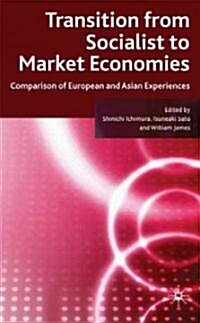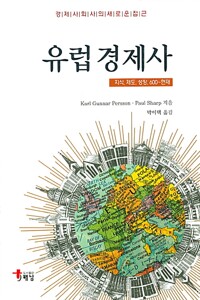
단행본
How capitalism was built: the transformation of Central and Eastern Europe, Russia, and Central Asia
- 개인저자
- Anders Aslund
- 발행사항
- Cambridge; New York, NY : Cambridge University Press, 2007
- 형태사항
- xvi, 356 p. : ill.; 23cm
- ISBN
- 9780521683821
- 청구기호
- 320.92 A835h
- 서지주기
- Includes bibliographical references (p. 315-342) and index
소장정보
| 위치 | 등록번호 | 청구기호 / 출력 | 상태 | 반납예정일 |
|---|---|---|---|---|
이용 가능 (1) | ||||
| 1자료실 | 00012413 | 대출가능 | - | |
이용 가능 (1)
- 등록번호
- 00012413
- 상태/반납예정일
- 대출가능
- -
- 위치/청구기호(출력)
- 1자료실
책 소개
"Anders eAslund is known for making bold predictions, which initially arouse controversy but become common wisdom a few years later. He foresaw the collapse of the Soviet Union in his book Gorbachev's Struggle for Economic Reform (1989). He depicted the success of Russia's market transformation in How Russia Became a Market Economy (1995), when others saw little but chaos. After Russia's financial crisis of 1998, ijlund insisted that Russia had no choice but to adjust to the world market (Building Capitalism, 2002), although most observers declared the market economic experiment a failure. - Why did not Russia choose Chinese gradual reforms? - Why are the former Soviet countries growing much faster than the Central European economies? - How did the oligarchs arise? - Where are the postcommunist countries heading? These are just some of the questions answered in his new book How Capitalism Was Built which tells the story how all but three of twenty-one former communist countries were transformed into market economies from 1989 to 2011, but less than half of them became democracies. Anybody who wants to understand the often confusing dramas unfolding in the region and to obtain an early insight into the future will find this book useful and intellectually stimulating"--
How Capitalism Was Built tells the story of how the former communist countries in East and Central Europe, Russia, and Central Asia became market economies from 1989 to 2006. It discusses preconditions, political breakthroughs, and alternative reform programs. Three major chapters deal with the deregulation of prices and trade, price stabilization, and privatization. Early radical reform made output decline the least. Social developments have been perplexing but mixed. The building of democracy and the establishment of the rule of law have been far less successful. International assistance has been limited but helpful. This region has now become highly dynamic, but corruption remains problematic.
How Capitalism Was Built tells the story of how the former communist countries in East and Central Europe, Russia, and Central Asia became market economies from 1989 to 2006. It discusses preconditions, political breakthroughs, and alternative reform programs. Three major chapters deal with the deregulation of prices and trade, price stabilization, and privatization. Early radical reform made output decline the least. Social developments have been perplexing but mixed. The building of democracy and the establishment of the rule of law have been far less successful. International assistance has been limited but helpful. This region has now become highly dynamic, but corruption remains problematic.
목차
Introduction: a world transformed; 1. Communism and its demise; 2. Shock therapy vs. gradualism; 3. Output: slump and recovery; 4. Liberalisation: the creation of a market economy; 5. From hyper-inflation to financial stability; 6. Privatisation: the establishment of private property rights; 7. An inefficient social system; 8. Democracy vs. authoritarianism; 9. From crime toward law; 10. The role of oligarchs; 11. The role of international assistance; 12. Conclusions: a world transformed.


